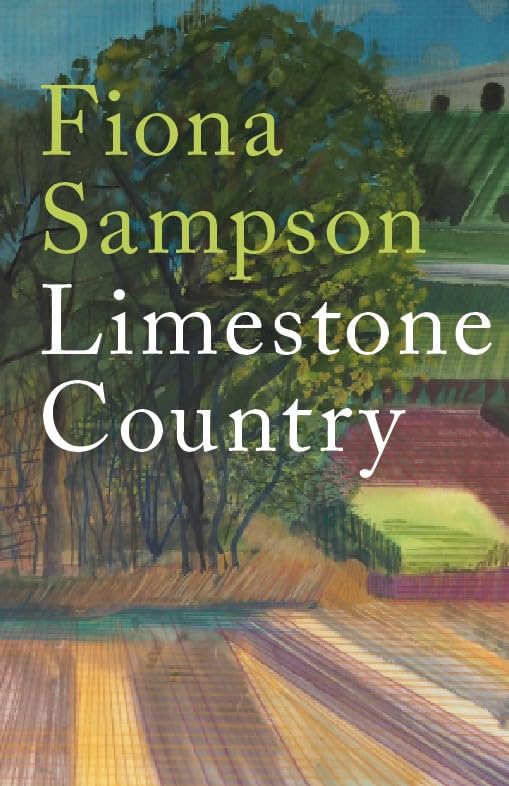Limestone Country is a perceptive, lyrical evocation and investigation into four landscapes in Europe and beyond. Seemingly disparate these places are bound together by their limestone geology, by personal experience and Fiona Sampson’s unique imagination. Limestone Country delves deep into the heart of these landscapes: the people, wildlife and culture, told through vivid snapshots of daily life, farming routines and encounters with the wild. It is a meditation on the meaning of place, how we shape it and how it shapes us.
Guardian Best Nature Book of 2017
Telegraph Best Summer Reading
Evening Standard Best Summer Beach Reading
‘In this tactile book, the poet Fiona Sampson [wanders across (and occasionally delves below) four landscapes – from rural France to Jerusalem – connected by their shared elemental qualities. She] layers accounts of [their/landscape] pasts with piquant observations of present human experiences and her own memories. With exquisite perceptiveness she explores the way we shape and are shaped by the landscapes we inhabit, showing how “nature isn’t unchanging, but changeable” – as is our experience of it.’
New Statesman
‘I have been completely captivated by the poet Fiona Sampson’s Limestone Country, […] a new way of bringing together geology, ecology and the human life these landscapes generate and sustain.’
Evening Standard
‘[British poet and writer] Fiona Sampson is beloved for the lyricism and scope of her writing, and Limestone Country is no exception. Turning her insightful eye toward the very ground upon which four disparate communities […] rest, Sampson interrogates not only humanity’s relationship to the environments it inhabits but how those environments shape the way humanity relates to itself.’
World Literature Today
‘This geologically themed nature walk swarms with objective facts […] A digressive and polymathic tour-guide […] This bewitching little book…’
The Spectator
‘Fiona Sampson takes four communities bound together by a shared geology and points up their differences in fine portraits of both place and people.’
Telegraph
‘Fiona Sampson’s recent Limestone Country proves to be a riveting tour de force. While being, ostensibly, a work that speaks to and of and through the “spirit of place,” it manages in a manner to reinvent a genre or genres. Part memoir, part travel-guide, part intimate diary, part dramatic novelistic narrative, part extended meditation, and part exuberant celebration of different “limestone countries” – the writing here eludes categories.’
Prose Studies 2017, VOL. 39, 2–3
‘Fiona Sampson’s lyrical and highly insightful Limestone Country […] describes four limestone landscapes – in England, France, Slovenia and Jerusalem – and the various ways people live with and relate to them. The book reveals how the rocks under our feet shape every aspect of human existence, from agriculture and art to our emotional and psychological weather.
Sampson concentrates not on the chemistry and physics of what she calls “the cannibal earth reconsuming her own”, but on how the geological terrain governs our imaginings and our potential – and how an engagement with limestone landscapes offers all manner of rewards, from the fine wines of the Périgord, to the spiritual revelations of the Holy Land and, most importantly, a deeper appreciation of the environment as a whole.
“Really living in these landscapes means paying radical attention to how they behave,” she says. It means knowing their wildlife as well as ways of farming, observing how water and vegetation respond to the mineral facts of rock and soil as much as how humans live in and with them… Such attention is patient and detailed. It’s a kind of ‘slow knowledge’ that is the opposite of generalisation.”
Limestone Country does not avoid the painful and tragic aspects of the landscape; indeed, it ends in one of the world’s most troubled places, where the earth is “the colour of rust, of fire, of blood. Apt coincidence that here, in Jerusalem, the limestone ground rock should produce terra rossa or red earth.” Eerily, the land seems to echo human activity everywhere Sampson turns, but the slow knowledge and wisdom of her Périgord neighbours, and the gorgeous passages, set in Oxfordshire,where she celebrates what American poet Randall Jarrell calls “the dailiness of life”, offer a healing alternative to that red earth, a sign that, when we are humble and attentive enough to learn from the earth how to live, we may begin, as Auden suggests at the close of his great poem “In Praise of Limestone” to “imagine a faultless love”.’
John Burnside, New Statesman

